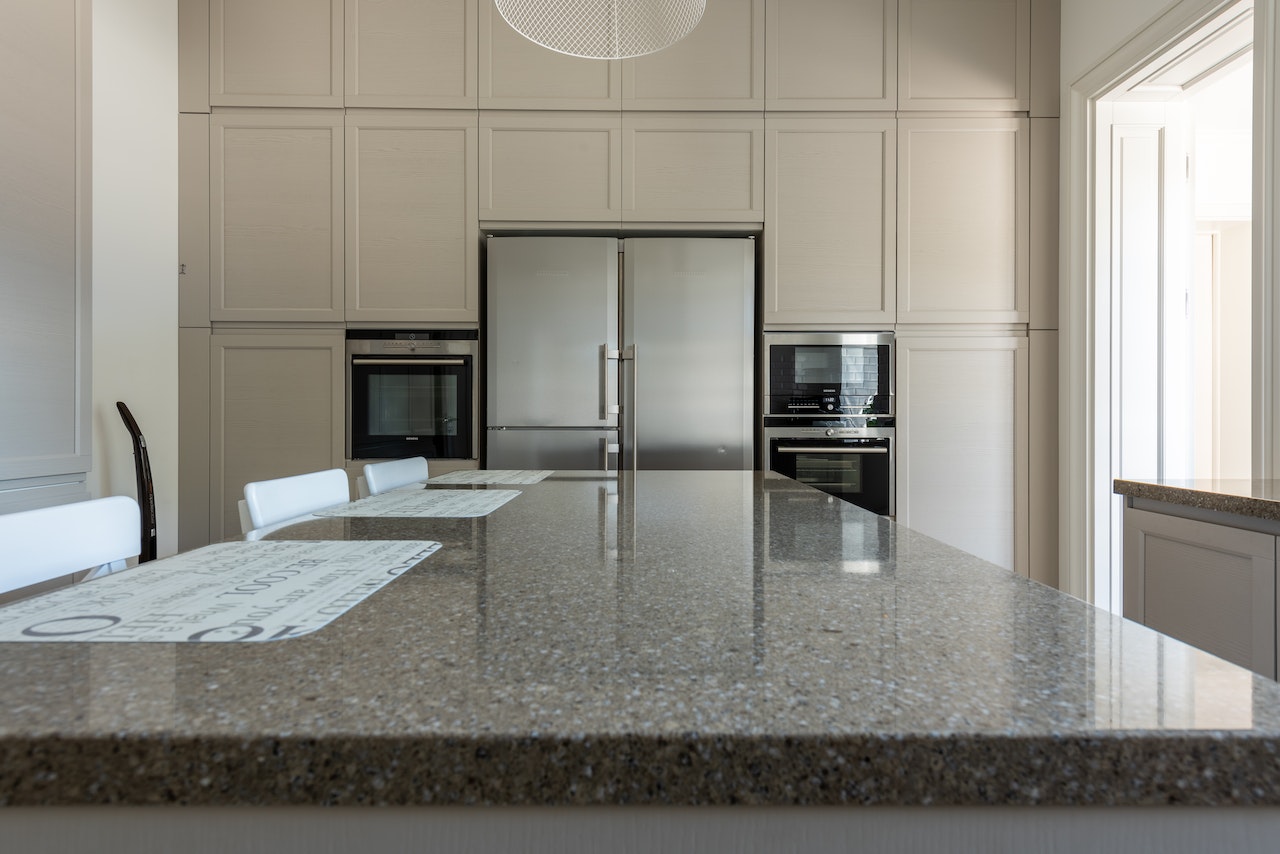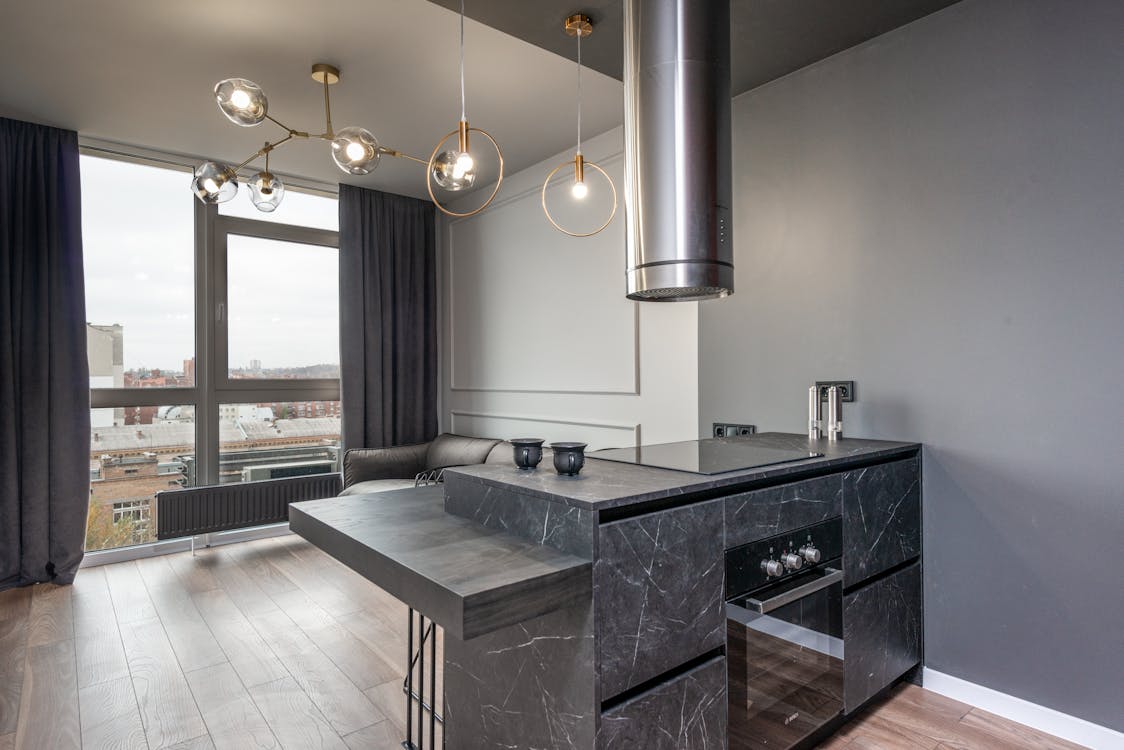
In the realm of kitchen design, the contrasting elements of kitchen islands take center stage, especially when it comes to maximizing space in small kitchens. In this article, we’ll explore the unique challenges and creative solutions that arise when integrating contrasting kitchen islands into compact kitchen spaces.
The beauty of contrasting islands lies not only in their pragmatic functionality but also in their ability to serve as a canvas for personal expression. Homeowners can infuse their unique style by opting for distinctive materials, experimenting with bold color choices, or incorporating custom features that make the island a true statement piece. It becomes a reflection of individual taste and a focal point that injects personality into the limited space of a small kitchen.
In essence, the title “Unlocking Efficiency and Style with Contrasting Islands” encapsulates the transformative power of these design elements. They go beyond the conventional notions of kitchen islands, transcending their role as mere practical additions. Instead, they become catalysts for efficiency, injecting a sense of style, and breathing new life into kitchens, especially those with spatial constraints. The contrasting island, in its multifaceted brilliance, stands as a testament to the marriage of form and function in the world of kitchen design

Contrasting Kitchen Islands:
- Small Kitchens’ Spatial Dilemma: Small kitchens often present a spatial dilemma, leaving homeowners searching for innovative solutions. Enter the contrasting kitchen island, a design element that can both enhance functionality and provide a visual focal point in limited spaces.
- Multi-Functional Appeal: The contrasting kitchen island serves a dual purpose in small kitchens. It acts as a practical workspace for meal preparation while simultaneously offering additional storage options. This multi-functional appeal is a key factor in addressing the constraints of small kitchens.
- Visual Impact in Limited Space: One of the advantages of contrasting kitchen islands in small kitchens is their ability to make a visual impact. By introducing a different color or material, the island becomes a standout feature, drawing attention away from the limited space and creating a visually appealing focal point.
- Strategic Placement: Proper placement is crucial when integrating contrasting kitchen islands into small kitchens. Consider placing the island in a way that optimizes traffic flow and ensures that it doesn’t impede the functionality of the kitchen. Strategic placement enhances both aesthetics and practicality.
- Storage Solutions: In small kitchens, storage is often at a premium. Contrasting kitchen islands can incorporate clever storage solutions, such as pull-out drawers, open shelves, or built-in racks. These features contribute to efficient organization and reduce clutter in limited spaces.
- Color Palette Integration: Harmonizing the contrasting kitchen island with the overall color palette of the small kitchen is essential. Choose colors that complement the existing scheme to create a cohesive and visually appealing design. This integration ensures that the island becomes a seamless part of the kitchen’s aesthetic.
- Flexible Seating Options: Contrasting kitchen islands in small kitchens can be designed with flexible seating options. Incorporating pull-out stools or extending the island for a cozy dining nook maximizes functionality without compromising valuable space.
Unlocking Efficiency and Style with Contrasting Islands
In the intricate dance of kitchen design, the concept of contrasting islands emerges as a key player, offering a dynamic solution to the perpetual challenge of balancing efficiency and style. These islands, strategically positioned in the heart of the kitchen, transcend their functional role and become transformative elements that elevate the entire space. Small kitchens, in particular, benefit immensely from the judicious use of contrasting islands, where space is a premium and every design choice must maximize utility.
Efficiency takes center stage as these islands seamlessly integrate into the kitchen layout, providing additional workspace and storage without compromising on style. In the realm of small kitchens, where every square inch matters, the contrasting island becomes a design marvel, unlocking hidden potential. The careful juxtaposition of colors, materials, or textures creates a visual break that not only adds depth to the space but also fosters an illusion of expansiveness, making the kitchen appear larger and more inviting.
Transforming Small Kitchens with Contrasting Islands and Streamlined Designs
- Efficient Layout Strategies for Small Kitchens: Small kitchens require efficient layout strategies to make the most of the available space. Contrasting kitchen islands become integral in these strategies, offering both workspace and storage without sacrificing style.
- Compact Appliances for Limited Spaces: In small kitchens, choosing compact appliances is key to maintaining functionality. The contrasting kitchen island complements this approach by providing an additional surface for meal preparation without overwhelming the limited space.
- Creating Illusions of Space: Contrasting kitchen islands contribute to creating illusions of space in small kitchens. The visual break they provide can make the kitchen appear larger, offering a practical and aesthetic solution to the challenges of limited square footage.
- Streamlined Design Elements: Streamlined design elements are crucial in small kitchens, and contrasting kitchen islands can play a pivotal role. Opt for clean lines and minimalistic features to ensure the island seamlessly integrates into the overall design, enhancing rather than hindering the limited space.
Enhancing Small Kitchens with Contrasting Islands
- Lighting Solutions for Small Kitchens: Adequate lighting is essential in small kitchens, and the contrasting kitchen island can be a focal point for incorporating stylish and functional lighting solutions. Pendant lights or strategically placed fixtures enhance both the island’s aesthetics and the overall brightness of the space.
- Maximizing Vertical Storage: Small kitchens benefit greatly from maximizing vertical storage. The contrasting kitchen island can be designed with additional shelving or hanging features, providing opportunities to store items vertically and optimize every inch of space.
- Personalized Touch in Limited Spaces: Contrasting kitchen islands offer a canvas for personalization in small kitchens. Whether through unique materials, color choices, or custom features, the island becomes a statement piece that adds personality to the limited space.
In the delicate dance of design for small kitchens, the contrasting kitchen island emerges as a versatile solution, addressing both spatial challenges and aesthetic aspirations. By strategically incorporating and optimizing these islands, homeowners can transform their small kitchens into functional and visually appealing culinary havens.
